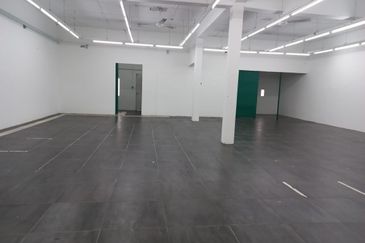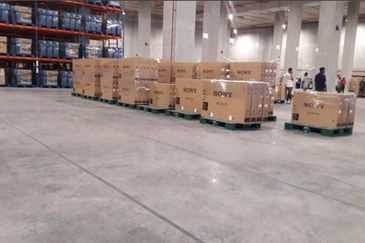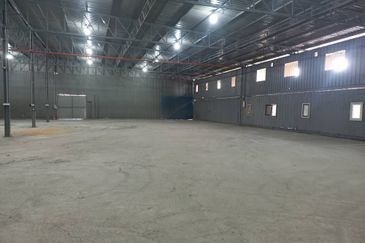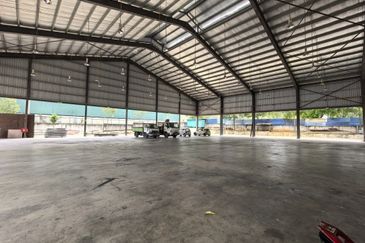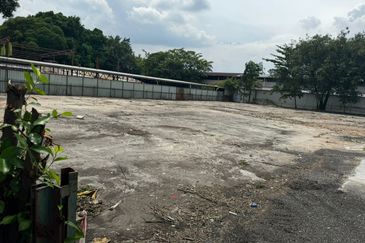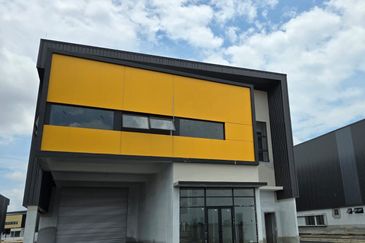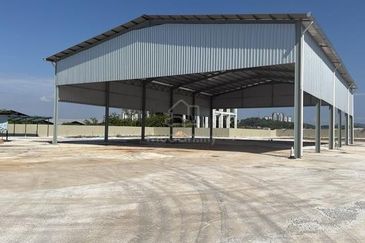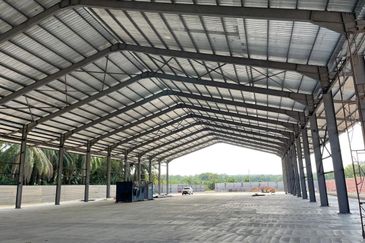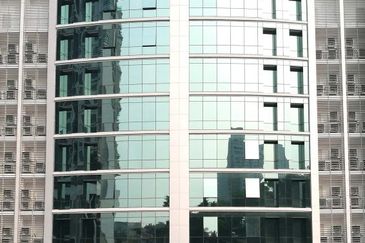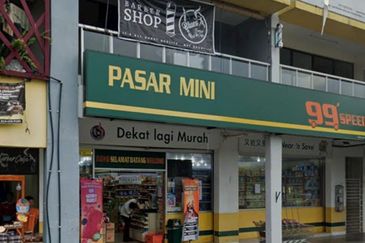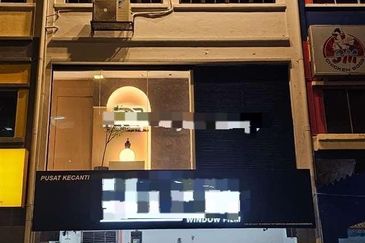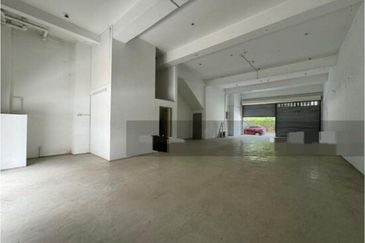
It is no secret that attractive investment opportunities lie in properties located close to public transit stations.
As such, many are anticipating new property hotspots to emerge along the vicinity of public transportation projects in the Klang Valley, which include the mass rapid transit (MRT) lines, light rail transit (LRT) line 3 , LRT Kelana Jaya Line Extension Project, bus rapid transit (BRT) for the Federal Highway, and the Kuala Lumpur-Singapore high speed rail (HSR).
One of the lines on track is the MRT Line 1 or the MRT Sungai Buloh-Kajang line, which has 31 proposed stations. Slated to become operational by year end is Phase 1 of the line comprising 12 stations, namely Sungai Buloh, Kampung Selamat, Kwasa Damansara, Kwasa Sentral, Kota Damansara, Surian, Mutiara Damansara, Bandar Utama, Taman Tun Dr Ismail, Phileo Damansara, Pusat Bandar Damansara and Semantan.
In view of this ripening harvest, TheEdgeProperty.com carried out a poll among 10 property consultation firms and real estate agencies to rank the top three property hotspots along the 12 stations in Phase 1. The participants were CBD Properties Sdn Bhd, ExaStrata Solutions Sdn Bhd, JS Valuers Property Consultants Sdn Bhd, Kim Realty Sdn Bhd, Landserve Sdn Bhd, LaurelCap Sdn Bhd, Metro Homes Sdn Bhd, Nawawi Tie Leung Sdn Bhd, Oregeon Property Consultancy Sdn Bhd and PA International Property Consultants Sdn Bhd.
Not surprisingly, the mature Kota Damansara station was ranked No 1 with votes from eight consultants, followed by Pusat Bandar Damansara station and Sungai Buloh station, with five votes and four votes respectively.
Notably, Kampung Selamat, Kwasa Damansara and Kwasa Sentral almost made it to the top three. Each of them received three votes.
Meanwhile, Bandar Utama received two votes while Phileo Damansara and Surian received one vote each. Mutiara Damansara, Taman Tun Dr Ismail and Semantan did not get any votes.
Metro Homes director See Kok Loong says the Mutiara Damansara MRT station, which is situated in the vicinity of Jalan PJU 7/3 at Petaling Jaya, is very similar in terms of positioning with Bandar Utama that comes with a shopping mall, office building and a mass public transportation system, namely the LRT line 3. However, Bandar Utama offers higher traffic and population density.
Furthermore, the Mutiara Damansara station is located on the main road of Persiaran Surian. “The residential area in the vicinity of the station is mainly landed houses whereby the density is low and hence the impact of the station on the properties there is not significant.”
Meanwhile, in well-established mature areas like Taman Tun Dr Ismail and the Semantan station in Damansara, the presence of the MRT stations in these places may pose challenges such as lack of parking facilities and traffic congestion. These areas are almost completely built up with little space left for future developments or extension of facilities.
“The MRT Line 1 is definitely a positive thing for these areas but there are better choices along the MRT Line that offer more growth potential,” See concludes.
Oregeon director Kok Chin Yee also points out that Taman Tun Dr Ismail, Semantan and Bandar Utama did not make it into the top 3 as the residents in these areas are mostly of the higher income group who still prefer to travel using their own vehicles. He adds that some of these areas are good for commercial activities but they offer lower population growth. Hence, the positive impact of the MRT line is limited for such mature locations.
No 1. Enhanced connectivity makes Kota Damansara the top choice
With eight votes out of 10, Kota Damansara station stands out as the clear winner of the 12 stations. The station is located along Persiaran Surian, close to Tropicana Medical Centre.
Over the past years, the area has benefited from the spillover effects from its more popular neighbours such as the townships of Bandar Utama and Mutiara Damansara, says PA International managing director Jerome Hong, who voted for the station along with Sungai Buloh and Kwasa Damansara.
With ease of accessibility and good connectivity, the overall outlook for Kota Damansara remains upbeat, he opines.
“Kota Damansara is also well-populated by the medium to mid-upper income population. Going forward, properties and businesses in the locality are expected to benefit from improved connectivity and convenience for its residents and potential higher footfalls for its commercial or retail establishments,” he adds.
Data from PA International showed that the transacted prices of selected properties close to the soon-to-be-opened Kota Damansara MRT station have been significantly higher compared to during the pre-construction period.
In Section 4 Kota Damansara, according to PA International’s data, average transaction prices for 2-storey terraced houses rose 155.1% from RM198 psf in 2012 to RM505 psf last year, which translates into an annual growth rate of 51.7%.
Average transacted prices for apartments in the area recorded RM296 psf in 2015, 79.4% higher than the RM165 psf in 2012. This translates into a 26.5% annual growth rate.
Oregeon’s Kok, whose choices were the same as the line-up of the top three hotspots, points out that areas with booming commercial activity, such as Kota Damansara, will benefit from the upcoming MRT station.
“An MRT station provides an alternative commuting option for short distances such as going to banks, restaurants, clinics or dentists near the station, but people will still prefer to drive if the distance is perceived to be far,” says Kok.
No 2. Boost for Pusat Bandar Damansara from new developments
Ranked second, the area surrounding the Pusat Bandar Damansara station is also favoured among property consultants as a region investors should watch out for. The station is located at Maarof Interchange of the Sprint Expressway.
Metro Homes’ See, who voted for the station, believes that MRT Line 1 will elevate the area into a property hotspot with help from the surrounding new developments such as Damansara City and Pavilion Damansara Heights.
He says Pusat Bandar Damansara is surrounded by high-end neighbourhoods like Bangsar and Damansara Heights, where property prices are among the highest in the country.
Hence, the surrounding developments such as Damansara City and Pavilion Damansara Heights are poised to reap benefits from the neighbouring ready markets for its high-rise property developments in Pusat Bandar Damansara, he explains.
“Just like how One Merenung in Bangsar created the interest and set price benchmarks there, Pusat Bandar Damansara would similarly witness renewed interest from property buyers and investors.”
See expects the price for high-rise residential properties in Pusat Bandar Damansara to improve significantly by at least 20% to 30% from the current level once the area is fully developed.
Based on the latest average transacted price as at 2Q2016 from TheEdgeProperty.com’s data, nonlanded residential properties in the vicinity of Pusat Bandar Damansara are being transacted at RM750 psf, down 11.45% from a year ago.
Meanwhile, the data from TheEdgeProperty.com shows that landed residences in the vicinity of Pusat Bandar Damansara transacted at an average price of RM682 psf as at 2Q2016, declining 18.42% from a year earlier.
In addition, commercial developments in Pusat Bandar Damansara such as offices also offer good upside potential because of the decentralisation of office spaces from Kuala Lumpur city centre to the fringe of the city, he adds.
He expects the prices of office lots in the area to improve from between RM700 psf and RM800 psf to between RM1,000 psf and RM1,500 psf eventually. At the same time, the rental rate for office lots will increase to around RM5 psf to RM7 psf from the current level of RM3.50 psf to RM5 psf.
Meanwhile, Oregeon’s Kok says besides commercial properties, high-density residences and projects located within walking distance to the Pusat Bandar Damansara MRT station are also poised to enjoy positive impact.
Although properties close to the station have already seen price growth soon after the announcement of MRT Line 1, he believes there is still upside potential once the line is operational.
“It is believed that there is still potential for rental and price increments upon completion of the MRT project. However, it very much depends on how user-friendly the MRT is, such as the provision of feeder buses and car parks, etc,” he adds.
No 3. Sungai Buloh’s outlook looks bright
Ranked third in the poll, Sungai Buloh station is also foreseen to become a property hotspot that cannot be ignored.
Kok opines that as the first/last station of the MRT Line 1, the Sungai Buloh station would be the main focus of the entire MRT project. The station is located next to the existing Sungai Buloh KTM station at Jalan Stesen in Sungai Buloh.
The distance between Sungai Buloh station and Kampung Selamat Station is about 1km.
Sungai Buloh in general will likely benefit from the improved connectivity, mobility and liveability brought on by the new transport infrastructure, as evident from recent increments in property prices and improved occupancies of properties in the area, Hong says.
He notes that the landed and non-landed residential property prices in Sungai Buloh have escalated significantly in the last five to six years.
According to PA International’s Hong, the average transacted price of 2-storey terraced houses in Bukit Rahman Putra, which is only 3.5 km from the upcoming Sungai Buloh MRT station, stood at RM483 psf at the end of May this year, 102.1% higher than the RM239 psf reported as at end-2010. The annual growth rate during the period was 17%.
Condominiums in the township recorded an average transacted price of RM388 psf as at last year, up from RM152 as at end-2010. It registered an increase of 155.3% over the five-year period, which translates into an annual growth rate of 31.1%.
Looking ahead, Hong expects properties in the area, which have remained relatively affordable by Klang Valley standards, to offer further capital appreciation.
“Given the availability of land and the presence of reputable developers, Sungai Buloh will see rapid developments going forward. Well-planned developments and new launches with attractive products will raise development benchmarks in this area,” he says.
According to Hong, one of the notable developments in Sungai Buloh is SqWhere, a project by Selangor Dredging Bhd.
With a total gross development value (GDV) of RM277 million, SqWhere is a 4.8-acre mixed development consisting of Small-offices Versatile-offices (SoVos) and retail offices.
Another notable development is D’Sara Sentral, an integrated development with a GDV of RM938 million. Launched by Mah Sing Group Bhd, the project is sitting on a plot of 6.55 acres and comprises four blocks of serviced residences, one block of SoVo, offices and lifestyle retail shops.
“SqWhere and D’Sara Sentral are two projects that can spur the whole development in Sungai Buloh because these projects are integrated with the upcoming MRT stations in Sungai Buloh,” Hong says.
This story first appeared in TheEdgeProperty.com pullout on Nov 4, 2016, which comes with The Edge Financial Daily every Friday. Download TheEdgeProperty.com pullout here for free.

TOP PICKS BY EDGEPROP
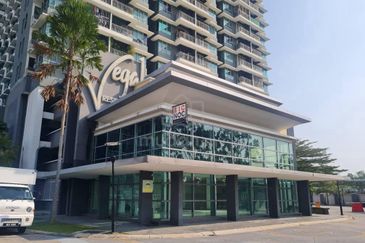
Facing Main Road Shop duplex Vega Residensi Condo Cyberjaya
Cyberjaya, Selangor
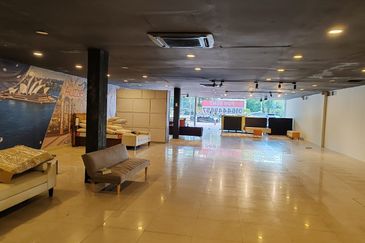
Petaling Jaya Commercial City
Petaling Jaya, Selangor
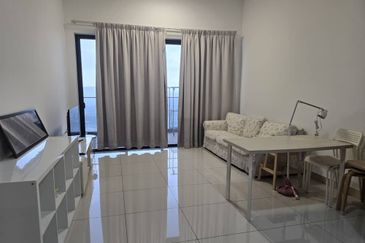
The Parque Residence @ Eco Santuary
Telok Panglima Garang, Selangor

Pusat Perdagangan Seri Kembangan
Seri Kembangan, Selangor
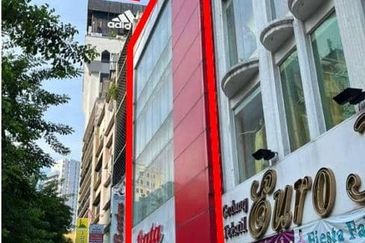
Jalan Tuanku Abdul Rahman
KL City, Kuala Lumpur







